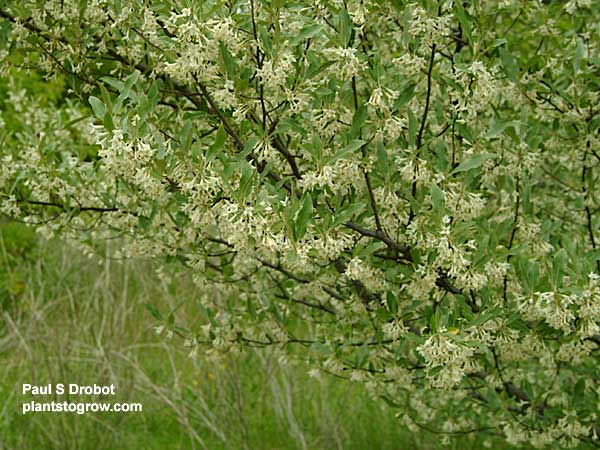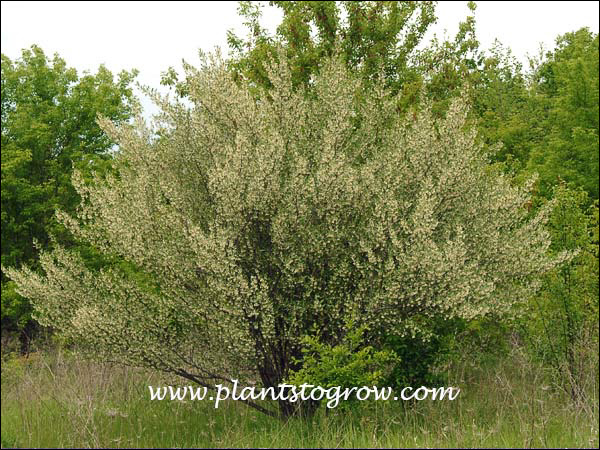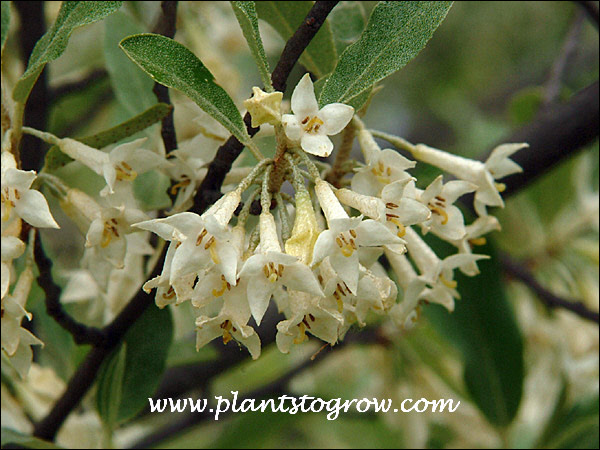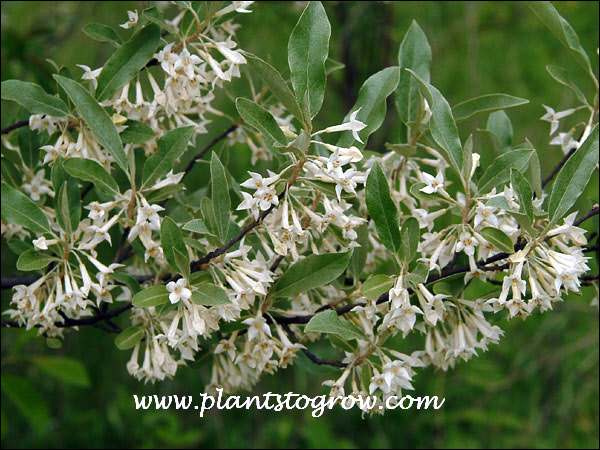| Description | This section has pictures and data of this plant growing in the wild. Russian Olive has escaped into the wild from ornamental plantings and is considered an invasive species in many parts of the United States. |
|---|---|
| Pronunciation | (el-ee-Ag-nus) |
| Plant Type | All Plants, Trees Deciduous |
| Hardiness Zone | 2-7 |
| Sunlight | full |
| Moisture | average |
| Soil & Site | nitrogen-fixing root nodules which allows them to adapt to many poor soil types |
| Flowers | tubular, yellow inside and silvery white outside, May-June |
| Fruit | drupe-like fruit that is spread by birds, sweet and mealy. |
| Leaves | alternate, simple, dull green above silvery below ,overall gray appearance. |
| Stems | stems may develop thorns, amount of thorns seems to be a variable characteristic |
| Roots | nitrogen fixing nodules on roots |
| Dimensions | Up to 20 feet tall by equal spread. |
| Propagation | cold stratified seeds |
| Native Site | Russian Olive is native to Europe and Russia. |
| Cultivar Origin | It was introduced to the United States in 1830. These plants have been used for erosion control, wildlife habitat, and in landscaping. |
| Author's Notes | When I first started in the landscape business (late 1970's) the Russian Olive was already being used less. It had a whole slew of diseases that was cutting its ornamental life short. I don't think I have seen any for sale in along time (2012). At the school where I taught Horticulture, there was a large area that was covered with the soil removed when a new addition was built. The soil was clayey gunk. The Russian Olive manage to reseed in this area and thrive. |
| Notes & Reference | #01-Manual of Woody Landscape Plants (Michael Dirr), #25-Seeds of Woody Plants in the United States, #74-Trees, Shrubs and Vines, #101-Invasive Plants of the Upper Midwest (Betty Czarapata) |

Cart




